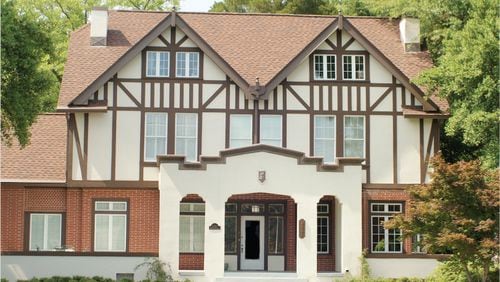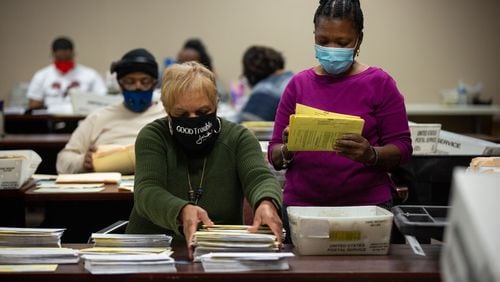Editor’s note: This article was reported and written in May 1993. It is republished as part of the AJC’s coverage of the life and legacy of musician Gregg Allman.
RELATED: Gregg Allman remembered with musical jam at the Big House in Macon
Strolling through springtime in this drowsy Middle Georgia town, it's hard to believe that Macon once made the world boogie.
In this quiet world of antebellum houses and 19th-century parks, James Brown recorded and broadcast his first single, "Please, Please, Please"; Little Richard first screamed out "Tutti Frutti"; Otis Redding learned to shout "Got-ta, got-ta, got-ta"; and the Allman Brothers Band soared in twin-guitar harmony.
Macon, for a time, was a national crossroads of rock and soul, a scene that flourished in the '50s and vanished in the '70s. Was it a dream? Or is Macon a gnat-line Brigadoon, where a magic kingdom of music might one day rise again?
RELATED
MORE ABOUT GREGG ALLMAN
For updates on the death of Gregg Allman, follow the AJC Music Scene blog on Facebook or Twitter
Perhaps. The $6.5 million Georgia Music Hall of Fame, slated to open in 1995, is a bid by city planners to capitalize on Macon's music history. In addition, there are plans to restore the historic Douglass Theater, and Allman Brothers historian Kirk West is considering turning their old communal house into a bed-and-breakfast.
But right now music is history here. The dead are dead and the living all live elsewhere. Yet seekers can visit the ghosts of rock 'n' roll past, stirring up memories at the landmarks of soul, on a tuneful cruise through the once and future capitol of Georgia music.
The average music pilgrim arrives in Macon via Interstate 75, crossing the Ocmulgee River over the Otis Redding Memorial Bridge on M.L. King Jr. Boulevard. The bridge is as homely as its namesake was stylish.
A better memorial to Mr. Redding can be found in the tiny Harriet Tubman Museum, 340 Walnut St., where a wall-sized mural - "From Africa to America" - includes depictions of Mr. Redding, Little Richard and one- time Macon resident Lena Horne.
Otis Redding was 26 years old in 1967 when his plane crashed into an icy Wisconsin lake. "Dock of the Bay, " released immediately afterward, went to No. 1. He is buried outside Macon, at his family's farm.
For Redding letters, photographs and other memorabilia, turn to the Booker T. Washington Community Center, at 391 Monroe St., which houses the Otis Redding Memorial Library.
Close by, on Fifth Avenue, is "Little" Richard Penniman's boyhood home, a shotgun shack with peeling paint and a variety of pre-owned cars in the weeds out front. (Please do not disturb the tenants. Little Richard doesn't live there anymore.)
Mr. Penniman left town at high speed and didn't look back until 30 years later, in 1990, when he played a homecoming concert at the Macon City Auditorium, 415 First St.
Built by black entrepreneur
Performing to a less-than-full house, Mr. Penniman nonetheless rattled the copper-domed roof in this venue where, decades earlier, he had opened shows for the likes of Amos Milburn and the Chickenshackers.
Back then, younger wannabes like Otis Redding often did Little Richard imitations at the weekly talent shows at the historic Douglass Theater at 355 M.L. King Jr. Blvd.
A handsome 850-seat vaudeville house with ornate plasterwork and bas relief gargoyles on the balcony facade, the Douglass was constructed by black entrepreneur Charles Douglass in 1923, and in its heyday hosted the likes of Bessie Smith and Ray Charles.
Today you will find only dust and pigeon droppings in the Douglass's elegant interior. Stripped of its marquee, it's been vacant since 1984, but the city is seeking $2.5 million in federal urban revitalization loans and other funds for renovation. Located next to the parcel chosen for the Georgia Music Hall of Fame, the Douglass would become part of a music park.
Young Otis won the $5 top prize at those Douglass shows week after week, earning attention from Phil Walden, then a fast-talking student at Sidney Lanier High School, at 2155 Napier St. (now called Central High School). Because the town was still segregated, young Phil wasn't allowed inside the black theater, so he parked outside and listened to the performances (simulcast by station WIBB) on his car radio.
Walden builds a foundation
Mr. Walden became Mr. Redding's manager and partner, then built one of the most powerful R & B booking agencies in the country. By 1967 his Macon-based company represented 46 acts, including Percy Sledge ("When a Man Loves a Woman"), Sam and Dave ("Hold On"), and Joe Tex ("I Gotcha").
Through this network, and the Capricorn record label, which he launched in 1969, Mr. Walden brought the world to Macon's door.
But, as Little Richard could tell you, the Macon establishment was not fond of wild rock 'n' rollers. "Phil gave [Macon] an international name, " says Skip Slaughter, who manages an updated version of the old Capricorn studios at 536 Broadway, "but the local community thought they were a bunch of renegade, long-haired druggies. And they were."
Among the longest-haired and druggiest was the Allman Brothers Band, Capricorn's biggest act. Though members of the band's latest incarnation make their homes far from Macon, the Allmans' past is etched all over town.
Wander through Rose Hill Cemetery, 1071 Riverside Drive, the burial place of slide guitarist Duane Allman and bassist Berry Oakley, who died in separate motorcycle accidents one year and two blocks apart.
Here, at the stage level of a natural grassy amphitheater, surrounded by ancient cedars, cypress and oaks, are the side-by-side white marble headstones of the two Brothers. Mr. Allman's is inscribed with a Gibson Les Paul guitar; Mr. Oakley's with a Fender bass; both are decorated with the mushroom motif that popped up on Allman album covers and concert posters.
After they moved to Macon in 1969 the Brothers used to relax in this cemetery. They took their inspiration for song titles and album cover art from many of its memorials. (The classic instrumental "In Memory of Elizabeth Reed" drew its title from a nearby 19th-century gravestone. "Little Martha" is also buried there.)
The sites of the Allmans
To see some other Allman sites, check out Beale's 1860, a restaurant at 315 College St.; the Hay House, 934 Georgia Ave.; and the Allman's old communal home at 2321 Vineville; all have appeared as sleeve art on album covers.
Visitors to Rose Hill leave flowers, guitar picks, coins and "very, very personal notes" on the graves of Mr. Allman and Mr. Oakley, according to R. Martin "Marty" Willett, founder of the Georgia Allman Brothers Band Association and voluntary keeper of the flame. When he's not directing tours for the local convention bureau dressed as poet (and Macon's first great musician) Sidney Lanier, Mr. Willett tends the graves, plants flowers and conducts yearly candlelight vigils by the headstones.
"I want flowers, butterflies and birds to be in abundance there, " Mr. Willett says. "I think Berry and Duane would dig it, they'd say, 'Far out - cool, man.' "
When they were scuffling, which was most of their early career, band members stopped in at the H & H Restaurant at 807 Forsyth St. to beg free meals from "Mama" Louise Hudson. Mrs. Hudson, the chef, co-owner and spiritual guide, still presides at the H & H, now decorated with autographed photos and posters of the Brothers in their hirsute heyday.
"You see those people up on that wall?" asks Mrs. Hudson. "I can remember when five of them would be at a table in here, eating out of two plates." When the band hit it big they took Mama Louise on tour. She was supposed to provide heaping plates of fried chicken and black-eyed peas, but they decided to treat her instead. "I was enjoying myself, and they said, 'Mama, you don't have to cook.' "
Of special interest at the H & H, besides the life-threatening sweet potato pie, is the large-scale cheesy oil painting of a smiling, be-robed Duane and Berry, floating above a mushroom-dotted Eden, strumming their guitars.
Fortified on iced tea sweet enough to make your teeth hurt, the Brothers would head down the street for recording sessions in the Capricorn Studios at 536 Broadway. Mr. Walden restarted Capricorn in 1991 in Nashville, but the old studio space, now owned by ophthalmologist Greg Jones and real-estate developer Talmadge Stuckey, is still in operation under the rather grand title Phoenix Sound Recording at Historic Capricorn Studio. (Capricorn's corporate offices at 535 Cotton Ave. stand empty, but the name's still on the door.)
The signs that remain
Mr. Walden's lenders stripped the interior of the studio after the label went bankrupt in 1979, yet there is still some evidence of the old days when the Allmans, Marshall Tucker, Wet Willie and others made Macon the Mecca of herb-inspired jams. (Some of the signs of those times: gold records on the walls; a stained-glass window that depicts a goat's head - the symbol of the Capricorn astrological sign; burns on the wood floor supposedly caused by Gregg Allman's smoldering cigarettes toppling off the edge of his Hammond B3 organ.)
More spirits of the Allmans flutter over the streets to the west. On Oct. 29, 1971, at the spooky corner of Hillcrest Avenue and Bartlett Street, between a lumberyard and a neighborhood of crumbling concrete block rental homes, Duane Allman died trying to avoid a flatbed truck. Berry Oakley died on Nov. 11, 1972, after a similar wreck at the intersection of Napier and Inverness avenues, two blocks south.
There are even a few living reminders of the Capricorn era. Keyboard player Chuck Leavell is the only current or former Brother who still makes his home in the Macon area. Charlane Plantation, his tree farm/recording studio/dog kennel, is outside town, and visitors are not necessarily encouraged.
They visit anyway. Pilgrims also hang around a boutique called Cornucopia, at 438 Second St., owned by his wife, Rose Lane Leavell, in the vain hope of getting closer to the Allman myth. They find pearls, shawls and antique lace.
"They come in, " says Mrs. Leavell, "they look at Rose Lane, they hope they're going to meet Chuck, and they don't buy anything."
"I guess, " she sighs, "we'll have to put in Allman Brothers T- shirts." Around the corner at 830 Mulberry St. are the former offices of radio station WIBB, the first black radio station in Middle Georgia, where James Brown recorded his first single, standing on a Coca-Cola crate to reach the microphone.
In 1989 WIBB moved to 369 Second St. before it was sold again this year. The old Second Street offices display what is claimed to be the microphone from that fateful recording session. The station, now WKXK-AM, broadcasts sports talk.
Onetime disc jockey Hamp "King Bee" Swain, a Macon entertainer whose band boasted Little Richard as its lead singer, pushed "Please, Please, Please" on his WIBB show, but doesn't know where the original acetate recordings might be. "I'm sure those were thrown away, " he says.
Today the former saxophonist sells Buicks at the Huckabee Auto Co., 696 Third St., and rarely blows his horn. Mr. Swain's sole token from his city's musical prime is a replica gold album for "Power of Love" from marginal Macon figure Joe Simon, who sang at Otis Redding's funeral.
"It does seem like a dream when you look back and think about all of the things that happened, " says Mr. Swain.
"Don't have much, " he adds, "but the memories."
Music capital again?
When he lived in Macon, "Little" Richard Penniman was an outcast. Today he has his own street.
But the renaming of part of the Downtown Connector as the Little Richard Penniman Boulevard is only one example of Macon's current efforts to acknowledge its musical legacy.
The state has approved $6.5 million in bonds to build the Georgia Music Hall of Fame in Macon, to open in 1995. Near the site is the historic Douglass Theater, a 1923-vintage black vaudeville house the city plans to renovate.
Local businesses are preparing for the influx. Owners of the old Capricorn studios plan a restaurant, performance space and museum to treat Hall of Fame visitors to a taste of the old days.
For some people the old days are still here. The Allman Brothers Band was reunited in 1989 and is still going strong.
If you go
Allman Brothers Band Museum at the Big House. 2321 Vineville Ave., Macon. 478-741-5551, www.thebighousemuseum.org.
Macon, Ga. Convention and Visitors Bureau. 450 Martin Luther King Jr Blvd, Macon. 478-743-3401. www.maconga.org
READ MORE: The Big House still rocks - a 2010 visit to the Allman Brothers Band Museum







